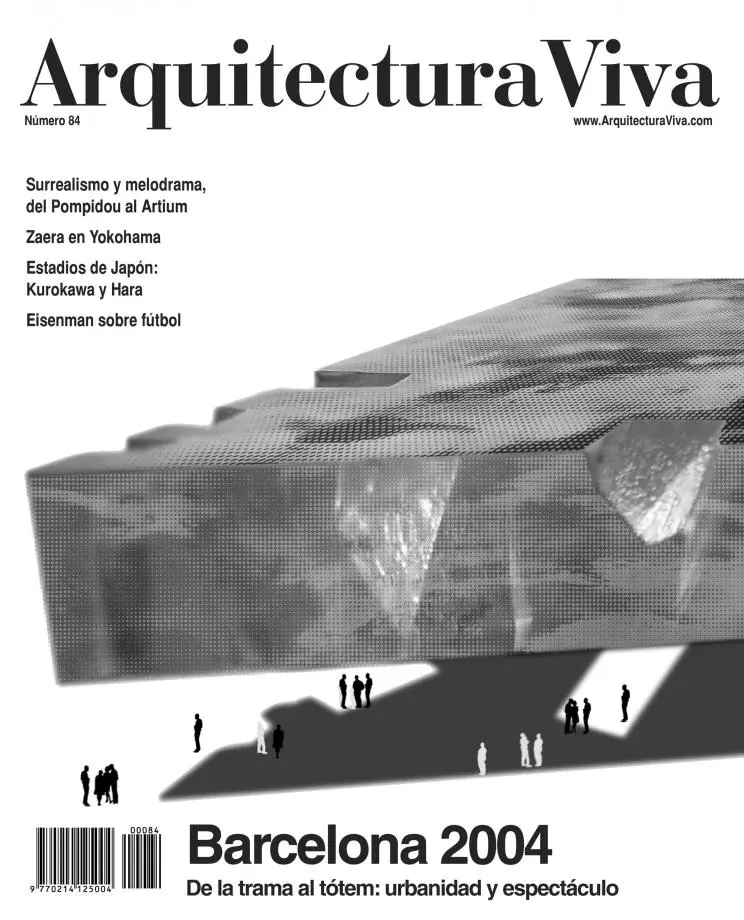
The city is no longer designed: it is programmed. Like a theater season or an anniversary celebration, urban development is orchestrated around spectacles that thematize effort, facilitate the allocation of funds and make investment visible. The olympic Barcelona, which obtained so many material and symbolic benefits from the organization of the Games in 1992, shortly afterwards boosted another process of growth where the Diagonal Avenue meets the sea, and once again gave this initiative date and name: 2004, a year which will see the celebration of a polychrome Fórum de las Culturas as congressional flagship of this urban enterprise.
Under the plural and politically orthodox motto of the cultures, this new fragment of Barcelona replaces the rational, monotonous and civilized lines of the grid with an emotional and polyhedric collage of objects in a conversation piece, thereby offering an excellent physical representation of the dislocated social body of the turn-of-the-century city. In this transit from pattern to totem, the tribal city becomes trivial event, and transformed into a touristic brand it is offered in the market of logos as a desirable destination: it would appear that only market city planning is able to fully comply with the demanding requirements of city marketing.
Those who yearn for the clean grids of the past criticize this discontinuous urbanism for its docile acceptance of spatial privatization, for its narcissitic replacement of flows with icons and for its vigorous capacity to produce segregation and inequality under the friendly mask of singularity and difference: in contrast with other empires of the past, the present one extends its universal control through the exaltation of the particular, shaping contemporary generic cities as patchworks of specific identities, weaved together by the red and narcotic thread of simulacra that make compatible postmodern irony and hypermodern fiction.
If the global city is the expression of a global power, it is also a representation of the market as a map of collective desires, and therefore of a model submitted to the choral referendum of a population which votes for security and spectacle through mortgages and rents. After all, the disjointed and individualistic city of the stars is preferable to the homogeneous and egalitarian city of despotism, and the space of junk of thematic urbanism is infinitely more tolerable than the landscape of ruins of systematic urbicide. They may call it Barcelona Inc, ©Barcelona or McBarcelona; but no one will doubt between generic Barcelona and ethnic Balkans.[+]





